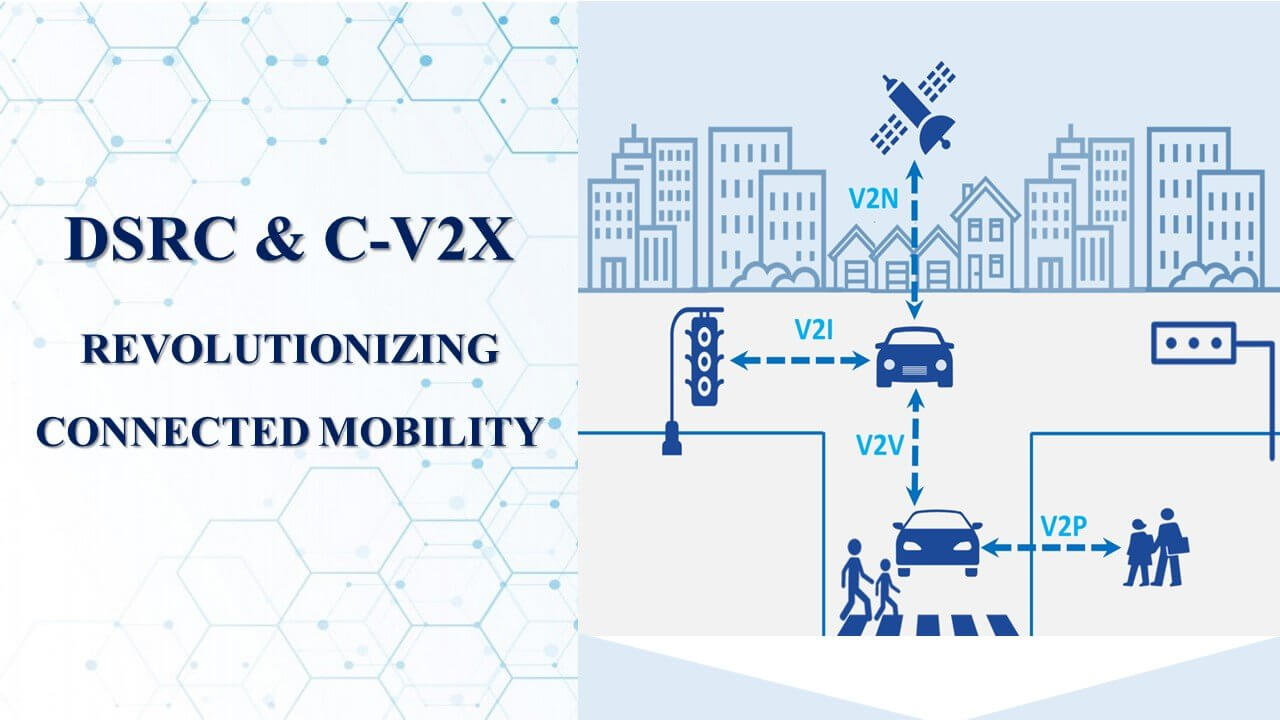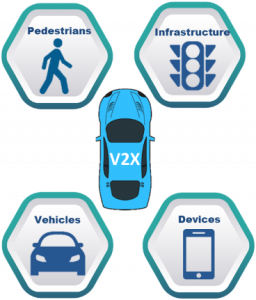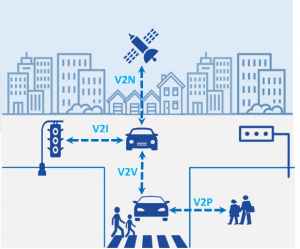DSRC and C-V2X: Revolutionizing the Future of Connected Mobility
V2X (Vehicle to Everything) is the future of connected mobility, poised to power the connected automotive revolution. V2X, which consists of V2V, V2P, and V2I, enables instantaneous information transfer between cars and roadside infrastructures such as traffic signals, pedestrians, and commercial establishments.
There has been a powerful transition to the data-driven model in the automotive industry. For automotive OEMs, Car data is now more profitable than the car itself. Technologies such as ADAS, Self-driving, Connected Car, and Fleet Management have been powering the transformation in the automotive industry.
The digital transformation of the human mind has brought about a great change in the way we live, we travel, and consume experiences across verticals. V2X, as technology advances the digital transformation in connected mobility and enables higher levels of automated driving.
Additional data points from V2X systems can enhance the intelligence and decision-making capability of the car.
V2X is a milestone in the path towards a fully autonomous car and visualizes even further beyond.
V2X can help provide enhanced safety to drivers across the globe, improve traffic efficiency while reducing environmental impact. Based on the unique characteristics of V2X and information transfer, there are tremendous high impact use cases as listed below:
- V2V – Vehicle to Vehicle
Lane change warning Upcoming traffic and Road Works
Collision Warning Driver and incident recording
- V2I – Vehicle to Infrastructure
Blind Spot Visualization Curve Zone warning
Work / School Zone warning Personalized advertising
- V2P – Vehicle to Pedestrian
Pedestrian Notifications Vulnerable Road User
Infotainment analytics In-vehicle safety
Technology
There are primarily 2 key communication technologies that power V2X: C-V2X and DSRC (Dedicated Short Range Communication) , Each varying on infrastructure. DSRC is built on a wireless communication system termed as “WAVE” while C-V2X is built on the traditional LTE modem. A DSRC radio will not be able to communicate with a C-V2X radio and vice-versa.
The standard for DSRC is defined in the Wi-Fi 802.11p while that for C-V2X is defined in the 3GPP Rel. 14/15.
C-V2X has 2 different communication modes: Network and Direct
- Network Mode: Different vehicles, infrastructure talk to each other through the traditional broadband licensed spectrum. Enables long-range applications such as emergency vehicle passage. This approach is also termed as “Uu Interface”.
- Direct Mode: The vehicles, infrastructure, and other assets talk to each other over the ITS band
(5.9GHz), independent of the cellular network. This enables short-range applications with instantaneous communication with reduced latency. This approach is also termed as “PC5 Interface”.
However, there are a few similarities between both DSRC and C-V2X:
- Both technologies use the same message sets (SAE J2735 and J2945).
- Both technologies use digital signatures to ensure security and trust in message providers.
There have been varying interest across both technologies in different geographies. During the years 2015 – 2017, there had been widespread adoption of DSRC as it was the only V2X technology available.
- China – China has bet big on C-V2X, being the preferred technology with aggressive rollouts of Road Side Units and implementation of C-V2X infrastructure.
- US – DSRC lost the spectrum in the US, with a clear path toward C-V2X in the US.
- The Federal Communications Commission in November split the 75 megahertz of formerly-DSRC spectrum at 5.850-5.925 GHz, allocating the lower 45 megahertz of the band for unlicensed use and the upper 30 megahertz for intelligent transportation systems that must use C-V2X technology.
- Europe – With 2 of the biggest automotive companies integrating DSRC in their automobiles, there is quite a contention between the two technologies, the way forward.
- Japan – Similar to Europe, there has been the mass production of vehicles with DSRC technology integrated, making it challenging for the switch to C-V2X.
Regulations and Technology Adoption
The Automotive industry and associations have been working with regulatory bodies across the globe to standardize V2X communication. Multiple governments consider V2X as a critical technology to reduce road fatalities and the way forward to minimize environmental impact. Governments are pushing the industry to shorten the deployment schedule for the technology.
Automakers are looking at C-V2X commercial launches in 2021 with the cellular LTE-based network access as 5G is not yet fully implemented.
Various automotive OEMs and industry players have now started integrating the V2X Stack in new automobiles.
- At CES 2020, Ford Motor Company announced that it will begin deploying C-V2X communications in all its new cars starting in 2022
- Volkswagen announced the premiere of the all-new Golf with V2X Capabilities
V2X adoption is dependent on the Automotive OEMs, Mobile Network Operators, and industry associations. With V2X technology now commercially viable, with the use case and value proposition being understood and defined, it is a technology with a trajectory to enhance automated driving and revolutionize connected mobility.




